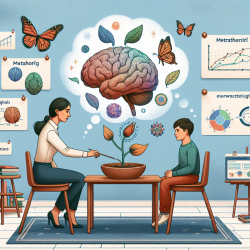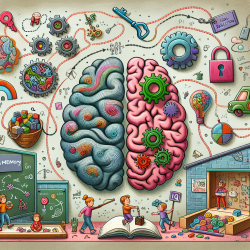Enhancing Child Therapy with Metaphorical Thought: Insights from Neuroscience
As practitioners dedicated to improving outcomes for children, understanding the intricate workings of the brain is crucial. The research article "Mapping the brain's metaphor circuitry: metaphorical thought in everyday reason" by George Lakoff provides valuable insights into how metaphorical thinking is embedded in our neural circuitry and how it can be leveraged in therapeutic settings. This blog explores the key findings of this research and offers practical ways to implement these insights in child therapy.
The Neuroscience of Metaphor
According to Lakoff's research, metaphorical thought is not merely a linguistic phenomenon but is deeply rooted in our neural circuitry. Metaphors allow us to understand abstract concepts through more concrete experiences. For example, we often understand time as a spatial journey, saying things like "looking forward to the future" or "leaving the past behind." These metaphors are not just figures of speech; they reflect how our brains process and understand complex ideas.
Practical Applications in Child Therapy
Understanding the neural basis of metaphor can significantly enhance therapeutic practices, especially in speech-language pathology. Here are some practical applications:
- Enhancing Communication: Children often struggle with abstract concepts. Using metaphors can make these concepts more tangible. For instance, explaining emotions as weather patterns ("feeling sunny" vs. "feeling stormy") can help children articulate their feelings better.
- Improving Engagement: Metaphors can make therapy sessions more engaging. Storytelling that incorporates metaphorical language can capture a child's imagination and make the therapeutic process more enjoyable.
- Facilitating Understanding: Metaphors can bridge the gap between the therapist's and the child's understanding. For example, explaining the concept of "focus" as a "spotlight" can help children grasp the idea of concentrating on one thing at a time.
Encouraging Further Research
While the current research provides a solid foundation, there is still much to explore. Practitioners are encouraged to delve deeper into the role of metaphor in therapy. Conducting small-scale studies within your practice can yield valuable data. For instance, you could measure the effectiveness of metaphorical language in improving comprehension and engagement during therapy sessions.
Conclusion
Incorporating the insights from "Mapping the brain's metaphor circuitry: metaphorical thought in everyday reason" into child therapy can lead to more effective and engaging sessions. By understanding and utilizing the neural basis of metaphor, practitioners can enhance their therapeutic techniques and improve outcomes for children.
To read the original research paper, please follow this link: Mapping the brain's metaphor circuitry: metaphorical thought in everyday reason.










